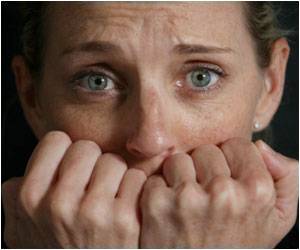Specific patterns of electrical brain activity that are associated with specific fearful memories were found in research.

- The neurons in the hippocampus called place cells generate electrical activity called as spiking pattern when in a particular place.
- The group of neurons that get activated as well as the spiking patterns that emerge changes with change in location.
- Experiments in lab animals showed that before they avoided a place in which they had a fearful experience, the brain recalled memories of the physical location where the experience occurred.
"We recall memories all the time," said senior author Dr. Daoyun Ji, associate professor of molecular and cellular biology at Baylor. "For example, I can recall the route I take from home to work every morning, but what are the brain signals at this moment when I hold this memory in my mind?"
When the animal is in a particular place, the neurons in the hippocampus appropriately called place cells, generate pulses of activity.
"A number of place cells generates electrical activity called a ’spiking pattern,’" Ji said.
"When the rat is in a certain place, a group of neurons generates a specific pattern of spikes and when it moves to a different place, a different group of neurons generates another pattern of spikes. The patterns are very distinct. We can predict where the animal is by looking at its pattern of brain activity." Ji added.
"Our laboratory rats cannot tell us what memory they are recalling at any particular time," Ji said. "To overcome that, we designed an experiment that would allow us to know what was going on in the animal’s brain right before a certain event."
In the experiment a rat walked along a track, back and forth. After a period of rest, the rat walked the same track again, but when it approached the end of the track, it received a mild shock.
After a minor rest period, the rat was placed back on the track. But when it approached the end of the track where it had received the mild shock before, the rat stopped and turned around, avoiding crossing the fearful path.
"Before a rat walked the tracks the first time, we inserted tiny probes into its hippocampus to record the electrical signals generated by groups of active neurons," Ji said. "By recording these brain signals while the animal walked the track for the first time we could examine the patterns that emerged in its brain - we could see what patterns were associated with each location on the track, including the location where the animal later got shocked."
"Because the rat turns around and avoids stepping on the end of the track after the shocks, we can reasonably assume that the animal is thinking about the place where it got shocked at the precise moment that it stops walking and turns away," Ji said. "Our observations confirmed this idea."
On observation of electrical activity of place neurons, researchers found the re-emergence of spiking patterns corresponding to the location in which the rat had received the shock, even though this time the animal was only stopping and thinking about the location.
"Interestingly, from the brain activity we can tell that the animal was ’mentally traveling’ from its current location to the shock place. These patterns corresponding to the shock place re-emerged right at the moment when a specific memory is remembered," Ji said.
Future Research
Researchers want to investigate whether the spiking pattern is absolutely required for the animals to behave the way they did.
"If we disrupt the pattern, will the animal still avoid stepping into the zone it had learned to avoid?" Ji said. "We are also interested in determining how the spiking patterns of place neurons in the hippocampus can be used by other parts of the brain, such as those involved in making decisions."
Researchers also hope to explore what role spiking patterns in the hippocampus might play in diseases that involve memory loss, such as Alzheimer’s disease.
"We want to determine whether this kind of mechanism is altered in animal models of Alzheimer’s disease. Some evidence shows that it is not that the animals don’t have a memory, but that somehow they cannot recall it. Using our system to read spiking patterns in the brains of animal models of the disease, we hope to determine whether a specific spiking pattern exists during memory recall. If not, we will explore the possibility that damaged brain circuits are preventing the animal from recalling the memory and look at ways to allow the animal to recall the specific activity patterns, the memory, again." researchers concluded.
The results appear in Nature Neuroscience.
Reference
- Chun-Ting Wu et al Nature Neuroscience; (2017)
Source-Medindia















